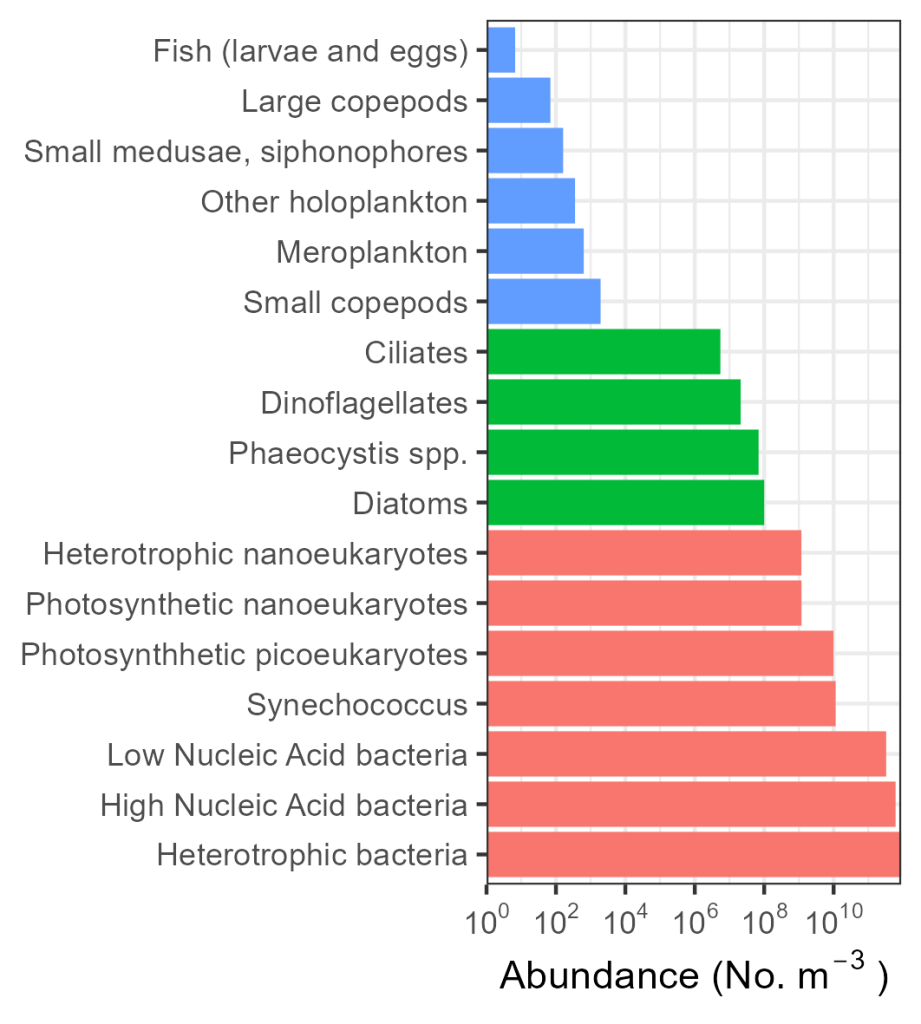Plankton in pelagic (open ocean) habitats vary greatly in abundance and body size, presenting significant challenges for assessing the state of pelagic habitats. There are also vast differences in the spatial and temporal scale of events and pressures impacting pelagic habitats, adding complexity and making pelagic habitats challenging to understand.
Plankton exhibit a wide range in abundance, across nine orders of magnitude. This diversity in abundance requires different methods for studying different components of the plankton community, including flow cytometry for the smallest plankton and nets for larger zooplankton.
Plankton functional group abundance from 2007-2020 at station Plymouth Marine Laboratory L4 in the Western Channel.

Plankton exhibit an extensive range of body sizes, across nine orders of magnitude, from tiny marine viruses to massive siphonophores over 10 m in length. In relative terms, this scale is equivalent to comparing the width of a needle to the length of Great Britain. No single method can sample the plankton community entirely so a range of equipment must be used.
The events and pressures impacting plankton unfold across an enormous temporal and spatial spectrum. For example, the impacts of storm events are acute and localised, while by contrast, ocean acidification and climate change occur more gradually over decades and vast spatial expanses.
The UK’s extensive plankton monitoring network includes widely distributed transect surveys (i.e. the Continuous Plankton Recorder or CPR), and static monitoring stations, providing the complementary coverage of space and time needed to understand impacts of anthropogenic pressures on UK waters and to support biodiversity assessments for pelagic habitats.
Holland, M. M. and A. McQuatters-Gollop (2024). mNCEA policy brief – The many scales of pelagic habitats. Defra mNCEA Programme – Pelagic Natural Capital. Plymouth, UK, University of Plymouth.
McQuatters-Gollop, A., Stern, R.F., Atkinson, A., Best, M., Bresnan, E., Creach, V., Devlin, M., Holland, M., Ostle, C., Schmidt, K., Sheppard, L., Tarran, G., Woodward, E.M.S. and Tett, P., (2024). The silent majority: Pico- and nanoplankton as ecosystem health indicators for marine policy. Ecological Indicators, 159: 111650.